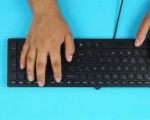- 1. Introduction to Booting from USB on Dell Computers
- 2. Why Booting from USB is Useful for Dell Users
- 3. Step-by-Step Guide to Boot from USB on Dell Computers
- 4. Common Issues and Troubleshooting for Dell USB Boot
- 5. Additional Tips and Tools for USB Booting
1. Introduction to Booting from USB on Dell Computers
Booting your Dell computer from a USB drive is a powerful way to run an operating system, recover data, or install new software. Whether you need to troubleshoot issues, run diagnostic tools, or perform a clean OS installation, understanding how to boot from USB is an essential skill for every Dell computer user. This guide will take you through the process in a clear, easy-to-follow manner, ensuring you can successfully boot your Dell PC from a USB drive whenever necessary.
2. Why Booting from USB is Useful for Dell Users
There are several reasons why booting from USB on Dell computers is advantageous:
- Operating System Installation: If you need to install or reinstall an OS, booting from a USB drive is an efficient way to get started without needing a CD/DVD drive.
- Troubleshooting and Repair: Using bootable USB drives with diagnostic tools can help troubleshoot and repair your computer’s system.
- Access to a Portable OS: USB booting allows you to carry your preferred operating system on a portable drive, which is ideal for those who need to work across multiple machines.
Understanding how to use USB booting opens up these opportunities for Dell users and provides more flexibility in managing their systems.
3. Step-by-Step Guide to Boot from USB on Dell Computers
Follow these steps to boot from a USB drive on your Dell computer:
- Step 1: Insert the Bootable USB Drive: Ensure the USB drive is properly formatted and contains a bootable image (such as an OS installation file or recovery tool).
- Step 2: Restart the Computer: Reboot your Dell computer, and during the startup, press the F12 key to access the boot menu.
- Step 3: Select the USB Device: Once the boot menu appears, use the arrow keys to select the USB drive and press Enter.
- Step 4: Follow the On-Screen Instructions: After selecting the USB device, the computer will boot into the operating system or tool stored on the USB drive. Follow the instructions to install, repair, or access files.
By following these steps, you'll be able to boot your Dell computer from a USB drive quickly and efficiently.
4. Common Issues and Troubleshooting for Dell USB Boot
While booting from USB is usually straightforward, there are some common issues you might encounter:
- USB Drive Not Detected: Ensure the USB is properly inserted, and try using a different port. Check if the USB drive is formatted correctly and contains a valid bootable image.
- Incorrect Boot Order: If your Dell computer does not boot from USB, you may need to change the boot order in the BIOS settings. To do this, press F2 during startup to enter the BIOS setup and set the USB drive as the first boot device.
- USB Drive Not Bootable: Verify that the USB drive is bootable by checking the image on the drive. You may need to reformat the USB and reinstall the bootable image.
If you encounter any of these issues, troubleshoot by checking the connections, BIOS settings, and bootable image on your USB drive.
5. Additional Tips and Tools for USB Booting
Here are some additional tips and tools to enhance your USB booting experience on Dell computers:
- Rufus: Use Rufus, a free tool to create bootable USB drives, especially for OS installations or recovery drives.
- UEFI vs. Legacy BIOS: Some Dell computers may require you to choose between UEFI and Legacy BIOS boot modes. Ensure that your bootable USB is compatible with the selected mode.
- Fast Boot: Disable the Fast Boot option in BIOS if you're experiencing issues with booting from USB, as it might interfere with the process.
These tools and tips can make your USB booting experience on Dell computers smoother and more reliable.





























